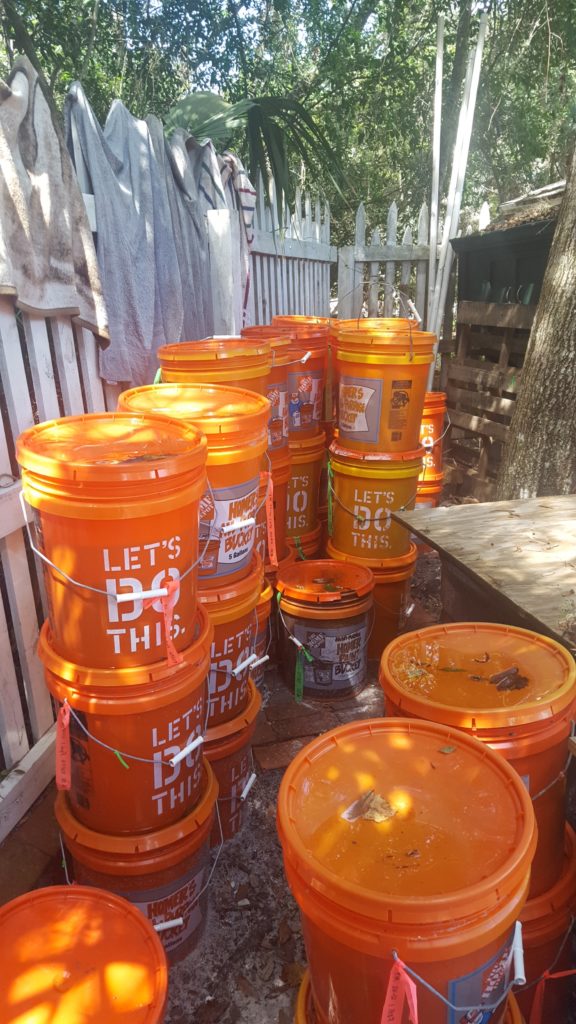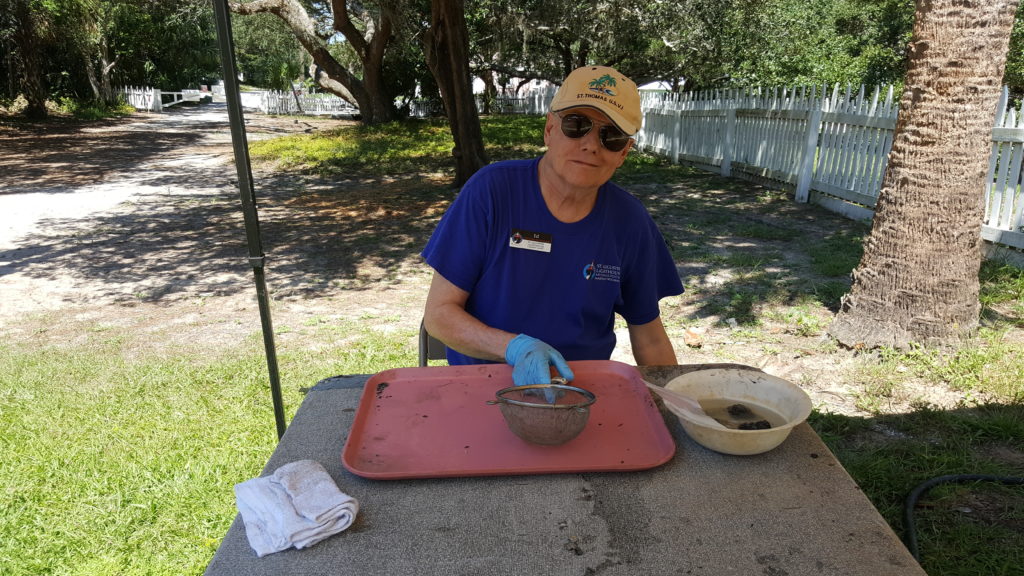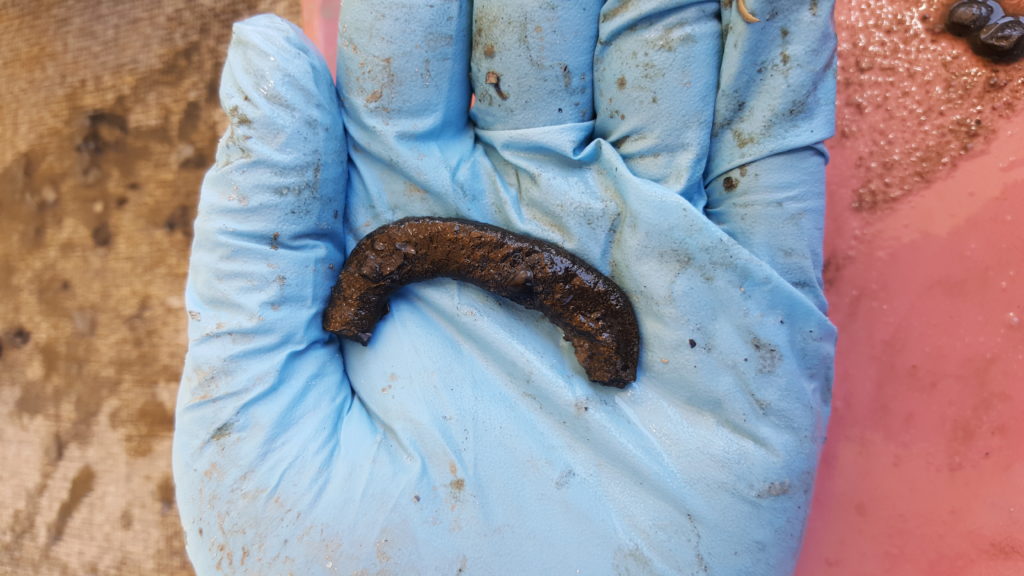Every year, our research arm, the Lighthouse Archaeological Maritime Program (LAMP), heads out on the water to either survey for new wrecks, target test potential anomalies from said surveys or locate and excavate archaeological sites underwater.
How exactly does LAMP work underwater and get the artifacts for the conservation team?
Unlike a “traditional” land site, we cannot simply dig up the dirt and move it to the side with shovels and wheelbarrows. We instead do a similar process, but with an all-in-one dredge setup suited for diving. By using gas-powered pumps to shoot water down a dredge head attached to a large diameter hose, it creates a vacuum in the hose. The hose then sucks up any of the sand in the grids and empties out a few meters away.
While dredging underwater, the divers try to carefully clean down to the concretions and avoid sucking up any artifacts. On the offhand chance that something is either too small to see or visibility conditions are too bad, we make sure to collect all the sediment in bags at the other end of the hose.
All the material that is taken up the hose is called dredge spoil. Most of the spoil is small particulates of sand or clay and is filtered out of the mesh bags.
However, after long sessions of dredging a large amount of shell hash builds up. We try to replace the bags every time a new grid is excavated or once the bag is too full. When that happens we have to bring the bags up to the boat using crates and lift bags.
The lift bags are simply bags that are filled with air and help slowly raise the dredge spoil up to the surface. Once we haul everything on board, the next step is to pour the spoil into buckets, make sure they are documented and transport them back to the lighthouse.
One thing we make sure to do is keep the buckets of spoil filled with water. Even though we bring them back at the end of every excavation day, we are not able to sort through them right away. Often times we will not get to the dredge spoil for quite some time, as field school and other conservation tasks take precedence.
This is where one of our superstar volunteers comes in. Ed Coward bravely takes on the duty to sift through the shell hash. I say “bravely” because if the buckets are not sorted through in a timely manner, the organic material in the spoil will do precisely that, spoil. We try to remove things that will make it worse, but crabs, small fish and other marine life will often slip through the cracks.
Because of the smell and the sorting process, Ed sets up shop outside. We will put up a tent over a table and bring out one dredge bucket at a time. Ed then takes a small amount of spoil, drains it with a colander and sifts through the remains on a plastic tray.
If he finds something of interest, it is put into a bag in a container of water and set aside for cataloging. The rest of the unwanted dredge spoil is put into another bucket and dumped outside when finished. Over the numerous LAMP field seasons our shell hash pile has grown quite a bit.
Usually any artifacts found while going through the dredge spoil are very small in nature. On the Storm Wreck they mostly comprised of lead bird shot that had scattered throughout the site. However, a few important items have come up in the dredge spoil. One of the most helpful artifacts for identifying the wreck was a small military button. We were able to track down the regiment and what their orders were which in turn told us when the wreck happened. Another great find was a gold coin. The guinea had markings and a date which further corroborated the timeline of the wreck.
On our most recent excavation of the Anniversary Wreck this summer, two unique artifacts popped up in spoil sorting. The first is a little wooden handle, possibly for a knife or other small tool. This is a neat object, as wood does not survive well in seawater. It is also in remarkably good condition considering it had been sucked up the dredge hose. The other object is actually only a broken piece of a brass buckle, but with some cleaning it may help age the new wreck.
Andrew Thomson is the Assistant Archaeological Conservator for the St. Augustine Lighthouse & Maritime Museum. He received his graduate degree and training from the Conservation Research Laboratory at Texas A&M.









